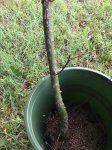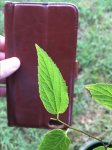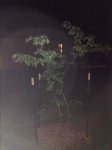
 This tree was given to me this weekend. I was told it had been collected 3 years ago and nothing done with it since. It was collected in Oklahoma from a field owned by a bonsai collector. So I don't know if it's native or if it was planted intentionally for the purpose of later being dug up.
This tree was given to me this weekend. I was told it had been collected 3 years ago and nothing done with it since. It was collected in Oklahoma from a field owned by a bonsai collector. So I don't know if it's native or if it was planted intentionally for the purpose of later being dug up. I was hoping to get some help identifying the species for this tree but also was curious how most people go about doing their own research when finding/collecting unknown species?






